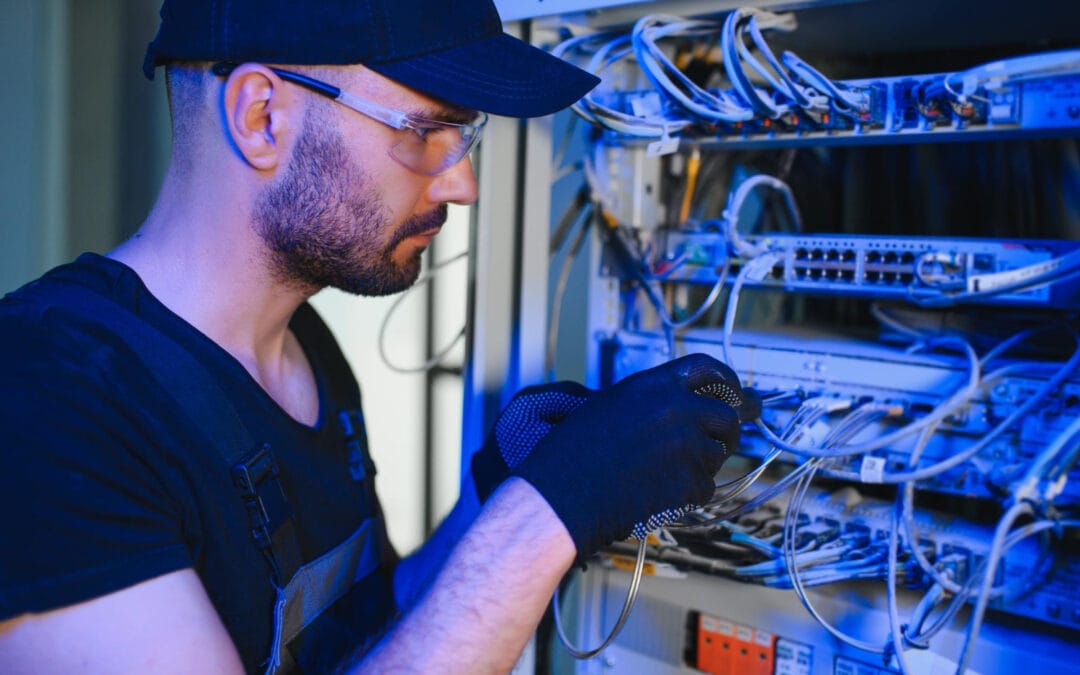When diving into hardware installation, it’s easy to overlook a few critical factors that can make or break your project. Whether you’re setting up a small business network or upgrading existing technology, understanding common pitfalls can save a lot of time and stress. In Massachusetts, where businesses rely heavily on robust technology, getting hardware installation right is key to smooth operations.
Hardware installations impact how efficiently a business runs and how effectively it serves customers. Mistakes not only lead to technical headaches but can also cost time and money. By identifying these errors early on, you can prevent problems before they arise and ensure your project stays on track.
Avoiding Inadequate Planning
Planning is the cornerstone of successful hardware installation. Without a solid plan, projects can face delays, spiraling costs, and other issues. Here are some planning mistakes to avoid:
– Underestimating the scope: Failing to recognize the full extent of a project can lead to surprises. Make sure you consider all components and necessary steps.
– Skipping a timeline: Without a clear timeline, projects can drift endlessly. A realistic schedule helps keep everything on track.
– Overlooking resources: Ensure you have all the needed tools and materials before beginning.
Working with a professional team offers several benefits. They not only provide expertise that streamlines planning but also anticipate potential hurdles. This proactive approach ensures the installation happens efficiently and with fewer disruptions.
Skipping Compatibility Checks
Ensuring all hardware components work together is like making sure all players on a team are in sync. Compatibility issues can lead to system failures and frustrating downtime. Imagine installing new computers only to find out they aren’t compatible with your existing network infrastructure.
Here are some steps to confirm compatibility:
1. Check manufacturer specifications: Always review compatibility requirements in the hardware manuals.
2. Consult with a hardware expert: Professionals can advise whether new components fit your existing system.
3. Test before final installation: Pilot testing can reveal compatibility issues before they impact your business.
These steps help ensure that all parts work harmoniously, saving both time and preventing headaches later on.
Ignoring Safety Protocols
Safety should be at the forefront of every hardware installation project. Disregarding safety protocols can lead to severe consequences, from system failures to personal injuries. Protecting both the equipment and the people working with it is of paramount importance.
Neglecting safety measures might expose a project to various hazards:
– Electrical risks: Faulty installations or mishandled equipment can cause electrical shocks.
– Physical injuries: Poor handling of heavy and fragile components can lead to accidents.
– Damaged equipment: Ignoring guidelines could harm valuable equipment, resulting in costly repairs.
To maintain a safe environment, consider these best practices:
1. Follow guidelines: Always adhere to the manufacturer’s safety instructions.
2. Use proper gear: Ensure that everyone involved wears suitable protective equipment.
3. Maintain an organized workspace: Keep tools and materials neatly arranged to prevent accidents.
Taking these steps not only safeguards individuals but also ensures that the installation proceeds without unnecessary interruptions.
Undervaluing Professional Expertise
Tackling hardware installation on your own might seem appealing, but trying to navigate it without professional assistance can be risky. DIY approaches often miss expert insights that can prevent costly mistakes and downtime.
Professional technicians bring numerous advantages to installation projects:
– Skill and experience: Trained professionals know how to handle unexpected challenges efficiently.
– Save time: A professional team can complete tasks faster and more effectively than a DIY attempt.
– Problem prevention: By leveraging their expertise, professionals can foresee potential issues and resolve them before they become major problems.
For instance, hiring an expert can help identify network configurations that are prone to failure, allowing for preemptive adjustments. Relying on professionals minimizes the risk of errors, ultimately keeping operations running smoothly.
Overlooking Post-Installation Testing
Once the installation is complete, the job isn’t over. Testing the setup afterwards is a vital step that confirms everything functions as intended. Skipping this crucial phase can leave systems vulnerable to undetected issues.
Here’s why post-installation testing matters:
– Catch hidden faults: Testing can reveal problems that might not be obvious during installation.
– Confirm correct configurations: Ensure all settings align with operational requirements.
– Validate system performance: Confirm that the installed hardware meets the necessary performance standards.
For effective testing, follow this simple checklist:
1. Run system diagnostics: Use diagnostic tools to identify any underlying issues.
2. Conduct a performance check: Make sure that the hardware operates within expected parameters.
3. Verify all connections: Double-check that all connections are secure and correctly plugged.
Testing ensures that you’re not just solving problems after they occur but preventing them from happening in the first place. This proactive approach helps ensure a smooth start for your new hardware and reduces the likelihood of future disruptions.
Final Thoughts
Hardware installation projects require attention to detail and a commitment to avoiding common mistakes. Taking the time to plan adequately, ensuring component compatibility, and rigorously following safety protocols sets the stage for success. By recognizing the value of professional expertise and emphasizing thorough testing, businesses can protect both their investments and their workflows.
Being mindful of these areas not only ensures a smoother installation process but also supports long-term operational efficacy. Whether you’re upgrading your network or installing new systems, keeping these pointers in mind can save time, money, and a lot of headaches down the road.
Prepare your business for success by avoiding common pitfalls during installation. Count on ASCIO Wireless to guide you through a streamlined installation process and manage your network infrastructure seamlessly. Discover how we can enhance your technology setup by learning more about hardware installation.

